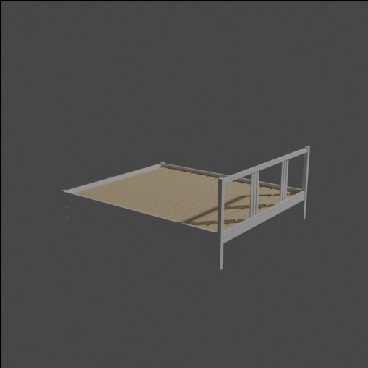Pix3D

The focus of this example is the bproc.loader.load_pix3d(), which can be used to load objects from the Pix3D dataset.
We provide a script to download the .obj files, please see the scripts folder.
Usage
Execute in the BlenderProc main directory:
blenderproc run examples/datasets/pix3d/main.py <PATH_TO_Pix3D> examples/datasets/pix3d/output
examples/datasets/pix3d/main.py: path to the python file with pipeline configuration.<PATH_TO_Pix3D>: path to the downloaded pix3d dataset, get it [here](http://pix3d.csail.mit.edu/)
examples/datasets/pix3d/output: path to the output directory.
Visualization
In the output folder you will find a series of .hdf5 containers. These can be visualized with the script:
blenderproc vis hdf5 examples/datasets/pix3d/output/*.hdf5
Steps
The Pix3DLoader loads all the object paths with the
category=bed.One of them is now randomly selected and loaded
Python file (main.py)
Pix3DLoader
# Load Pix3D objects from type table into the scene
objs = bproc.loader.load_pix3d(data_path=args.pix_path, used_category="bed")
This loads a Pix3D Object, it only needs the path to the Pix3D folder, which is saved in args.pix_path.
The used_category = bed means a random bed model will be loaded.
The position will be in the center of the scene.
CameraSampler
# Find point of interest, all cam poses should look towards it
poi = bproc.object.compute_poi(objs)
# Sample five camera poses
for i in range(5):
# Sample random camera location around the object
location = bproc.sampler.sphere([0, 0, 0], radius=2, mode="SURFACE")
# Compute rotation based on vector going from location towards poi
rotation_matrix = bproc.camera.rotation_from_forward_vec(poi - location)
# Add homog cam pose based on location an rotation
cam2world_matrix = bproc.math.build_transformation_mat(location, rotation_matrix)
bproc.camera.add_camera_pose(cam2world_matrix)
We sample here five random camera poses, where the location is on a sphere with a radius of 2 around the object. Each cameras rotation is such that it looks directly at the object and the camera faces upwards in Z direction.